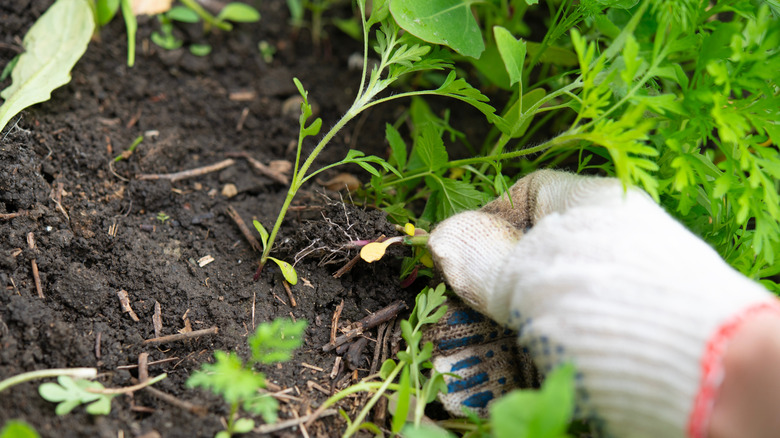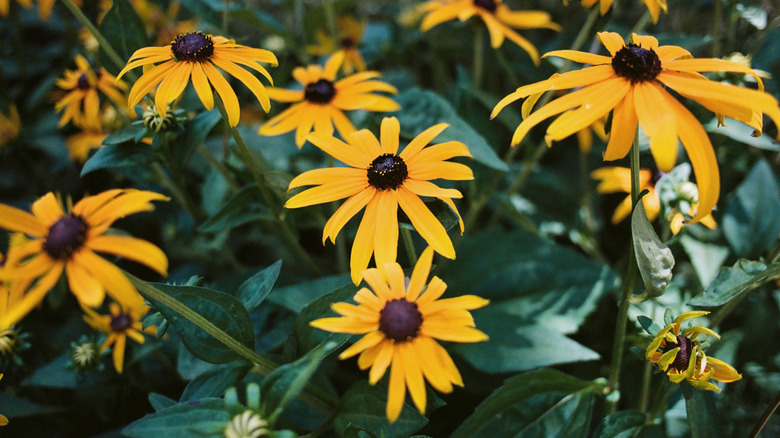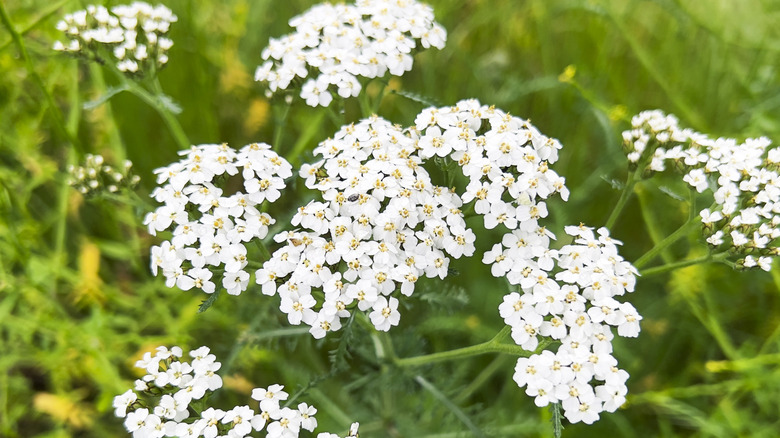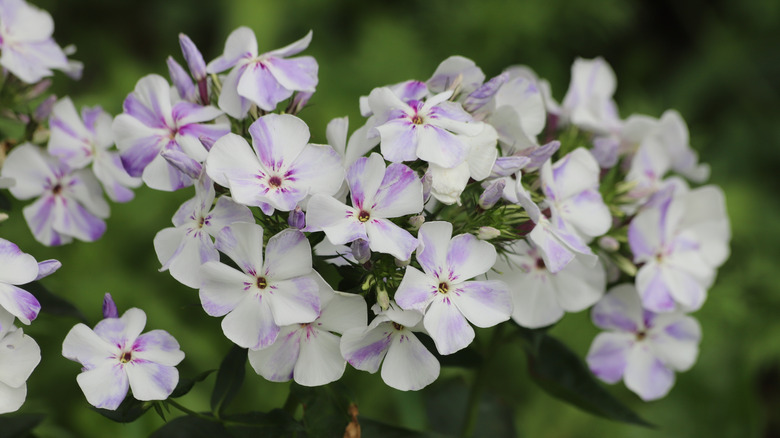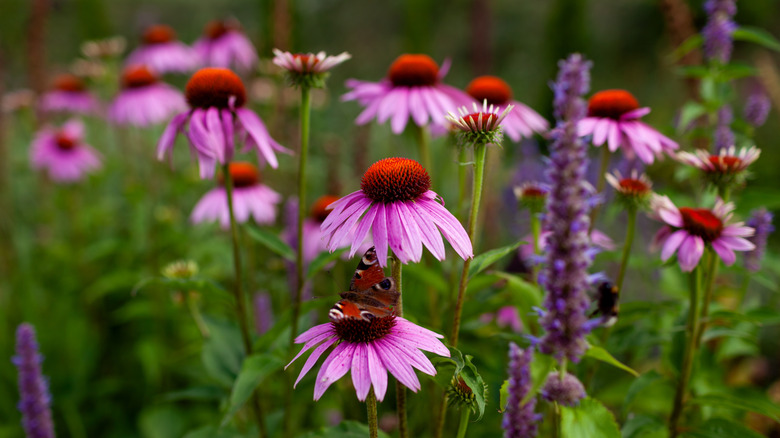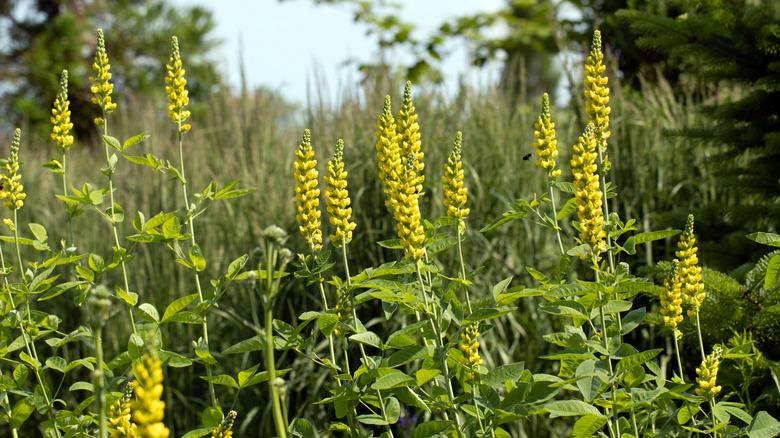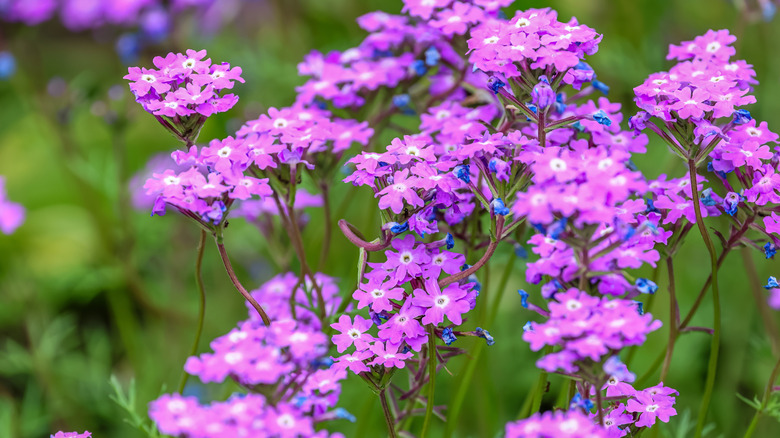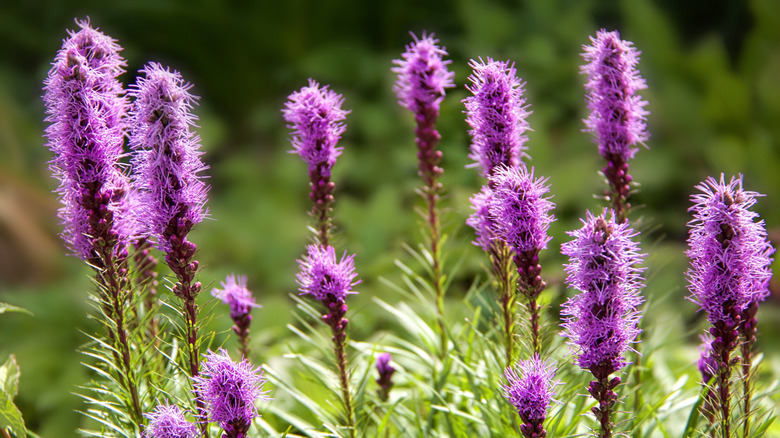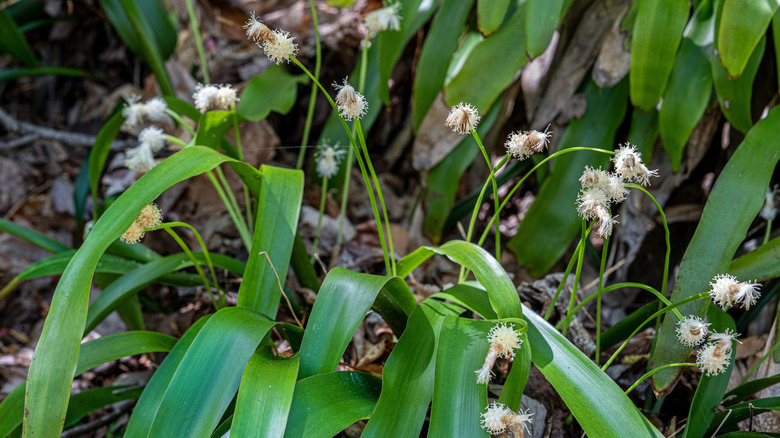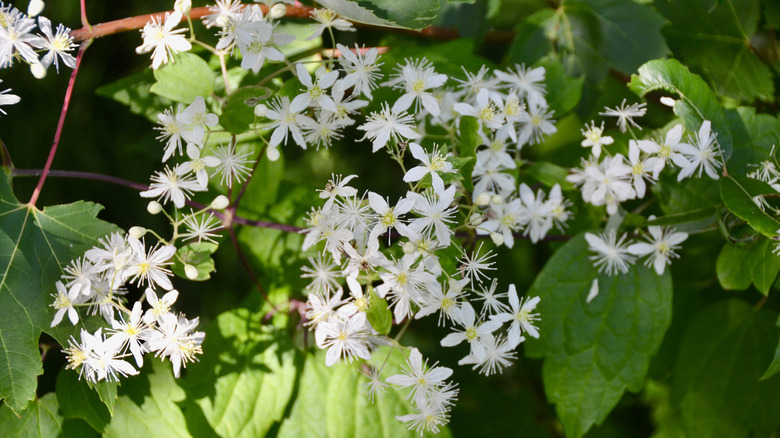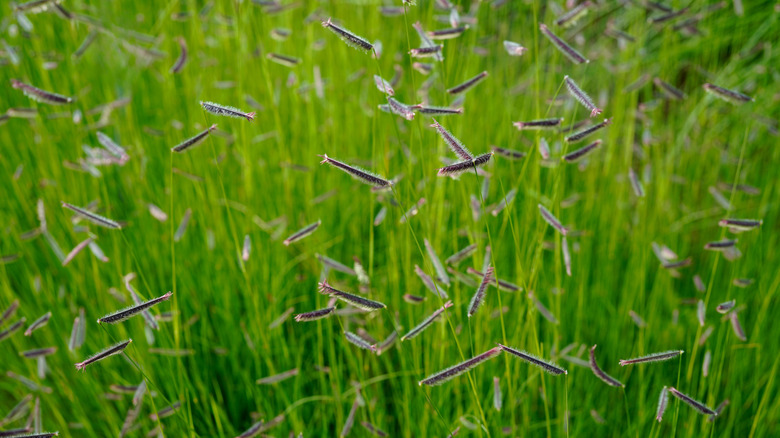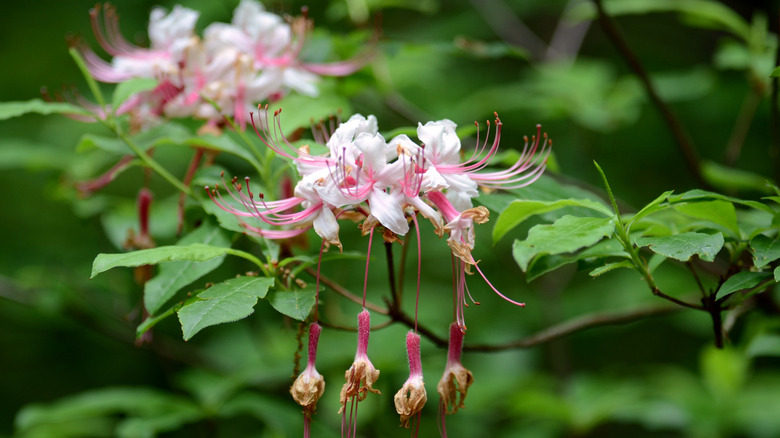Stop Weeds Before They Can Start With A Colorful Garden Solution
Weeding the garden is a task most of us dread the moment we see those pesky shoots poking through. But instead of spending your weekends yanking them out or relying on harsh sprays, you can outsmart weeds right from the start by planting a garden that leaves no room for them to grow. Instead of leaving bare soil open for weeds to take over, you can fill your beds with colorful, low-maintenance plants that act as living mulch.
These fast-spreading, ground-covering perennials like yarrow, black-eyed Susan, and creeping phlox form dense mats or leafy canopies that block sunlight, making it hard for weeds to sprout in the first place. Plus, they give your garden constant color and texture, their flowers attract pollinators, and these plants can save you hours of upkeep all season long.
But not only do these plants stop weeds, they're all perennial shrubs, vines, grasses, and flowers native to America, too. So they're better for the environment, and you won't have to plant them again and again. That way, you can enjoy your natural weed control plants for years to come.
Black-eyed Susan
Black-eyed Susan (Rudbeckia hirta) is a fast-growing perennial that spreads easily and fills space with coarse, hairy foliage and bright yellow blooms with dark centers. In USDA Hardiness Zones 3 to 8, it thrives in full sun and tolerates a range of soils, from clay to sand, as long as they're well-drained. Once it settles in, black-eyed Susan self-seeds creating thick patches that leave little room for weeds to take hold. This perennial is low-maintenance and pollinator-friendly, and a practical choice for slopes, borders, or naturalized spots where weeds tend to creep in.
Yarrow
Yarrow (Achillea millefolium) is a tough, colorful perennial that makes weed control almost effortless. Plant it in spring after the last frost, and it quickly spreads to form dense, low-growing clumps that smother weeds. It is hardy in zones 3 to 9, and thrives in full sun and dry, well-drained soil. Skip overly rich soil, as it tends to make the plant grow too tall and floppy. Once established, yarrow's thick growth and vibrant blooms fill in open spaces fast, leaving no room for weeds to take hold.
Creeping phlox
Creeping phlox (Phlox subulata) is another, low-growing perennial that puts weeds on lockdown. Its dense, mat-like growth spreads and forms a colorful ground cover that weeds can't break through. With needle-like leaves and starry blooms in pink, purple, blue, or white, it turns any sunny space into a thick floral carpet. In zones 3 to 9, it thrives in well-drained soil and needs little water once established. Its evergreen growth adds texture and color even after the flowers fade, while its fast-spreading nature holds the soil in place and carpets empty spaces quickly, all with little maintenance.
Path rush
Also known as wire grass, path rush (Juncus tenuis) is a perennial flowering grass known for its tolerance of heavy foot traffic, making it a great ground cover choice for pathways where pesky weeds may pop up. It definitely outcompetes any weeds in its path ... in fact, some gardeners consider it to be a weed, too. However, this native plant loves moist areas and grows in tough, compact soil that other plants can't handle. Path rush is hardy to zones 2 through 9 and both its width and height range between 6 inches and 2 feet.
Coneflower
Coneflower (Echinacea spp.) adds bold color and structure to your garden while keeping weeds out. Its upright growth and wide, coarse leaves shade the ground below, limiting sunlight and making it harder for weeds to sprout. Blooming from summer into fall, coneflowers come in vibrant shades of pink, purple, orange, and white, attracting pollinators while filling in space efficiently. They grow well in full sun and tolerate poor, dry soils in zones 3 to 9. With a strong root system and self-seeding habit, coneflowers return year after year with little fuss, creating a vibrant, low-maintenance barrier against unwanted growth.
Carolina lupine
The perennial Carolina lupine (Thermopsis villosa) is native to the Southeast, where most true lupine varieties wither in the hot weather. But when it comes to weeds, this native wildflower will form dense, upright clumps to keep them at bay. The stunning yellow flowers grows in zones 4 through 8, like acidic or neutral moist soil, prefer full sun, and can reach 3 to 5 feet in height and 1 to 3 feet in width. Birds and pollinators love this plant ... if they leave you any seeds left, it may even spread. Otherwise, propagate by root division.
Rose verbena
Rose verbena (Verbena canadensis) brings long-lasting color and effective weed control to garden beds, borders, and containers. With its spreading, trailing habit, it quickly covers bare soil, reducing light and space available for weeds to grow. Blooming from spring through fall in vibrant shades of purple, pink, red, and white, verbena thrives in full sun and well-drained soil. It performs best in zones 6 to 10 as an herbaceous perennial that attracts pollinators and resists drought, salt, heat, and even humidity.
Blazing star
Blazing star (Liatris spicata) stands tall in the garden, filling vertical space with vibrant blooms while crowding out weeds at the base with its clumping growth. In summer, tall flower spikes bloom in purple, pink, or white from top to bottom, attracting hummingbirds, butterflies, and bees. Blazing star thrives in full sun and well-drained soil, especially in zones 3 to 8. It's drought-tolerant, low-maintenance, and returns year after year.
Fraser's sedge
Fraser's sedge (Carex fraseriana), also known as lily-leaf sedge, is a versatile ornamental grass that works as a natural ground cover to suppress weeds. Its fine, arching blades grow in dense clumps that crowd the soil surface, and make it difficult for weeds to sprout. With varieties suited for sun or shade, Carex is adaptable and thrives in USDA Zones 5 to 7, depending on the type. It handles moisture well and keeps gardens tidy by spreading steadily and outcompeting weeds, all while softening the look of borders or the space beneath trees, without demanding much care.
Virgin's bower
Virgin's bower (Clematis virginiana) is one of the few native varieties of clematis. The pretty white flowers don't just attract songbirds and pollinators, however. The fast-spreading vine loves woodland regions and can even tolerate deep shade. Due to its rapid growth, it also helps with weed control when used strategically. The woody vine can be trained along fences, trellises, or allowed to trail over the ground, covering bare areas and limiting weed growth through shading. Virgin's bower, which is also known as woodbine or old man's beard, thrives in zones 6 through 8.
Blue grama
Blue grama (Bouteloua gracilis) is a native ornamental grass that offers both beauty and weed control in low-maintenance landscapes. Its fine, feathery foliage forms a dense clump that crowds out weeds by minimizing exposed soil. The plant's signature eyebrow-shaped seed heads appear in summer, adding unique texture and movement. Blue grama thrives in full sun and dry, well-drained soil, and is especially useful in xeriscaping or prairie-style gardens. Hardy in zones 3 to 10, it's drought-tolerant and resilient once established.
Native azaleas
Azaleas create lush, weed-resistant garden beds with their bushy growth and shallow root systems that spread wide, covering the soil surface. However, the 17 native varieties like the pinxterbloom azalea, flame azalea, and swamp azalea, also support wildlife. They can help block sunlight from reaching weed seeds, making it harder for unwanted plants to grow. Blooming in vibrant shades of pink, orange, yellow, and white, different varieties of azaleas bring color in spring and again in fall. The native shrubs are more low-maintenance than their non-native cousins — just water thoroughly, especially in the first year.
